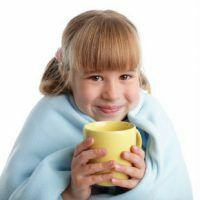
In autumn and winter, many colds worsen. Often with such diseases, doctors prescribe a course of antibiotics. To understand what antibiotics to take in angina and flu in children for maximum effectiveness and least harm to the body, the doctor must accurately diagnose the disease in a small patient and own the fullness of the clinical picture.
- Symptoms of angina
- Bluetongue
- lacunarity
- Follicular
- fusospirochetal
- Antibiotic treatment
- Penicillin
- Amoxicillin
- Amoxiclav
- Augmentin
- Ampioks
- Phenoxymethylpenicillin
- Oxacillin
- cephradine
- Cephalexin
- Erythromycin
- Spiramycin
- Clarithromycin
- Azithromycin
- Roxithromycin
- Vilprafen
- Tetracycline
- Doxycycline
- Lidaprim
- Biseptol
- Bioparox
- Inhalipt
- Gramidine
- Nystatin
- Leavin
- Ketoconazole
- Is it possible to treat the flu with antibiotics
Symptoms of angina
In any of the types of angina, the main symptoms will be the following:
- Painful sensation when swallowing and as a consequence, the child's refusal to eat and even drink.
- Increase in body temperature, up to 40 ° C.
- Bright red throat, swelling and swelling of the tonsils.
- Less common is nausea, vomiting, diarrhea and general intoxication of the body.
Catarrhal
However, the complications that can provoke this type of angina are no less dangerous than those of its more severe types. The incubation period of catarrhal angina is in different cases from two hours to several days. The causative agents of catarrhal sinus are various microorganisms.
Symptomatic of the disease:
- Acute onset of the disease with painful sensations in the throat and dry mouth.
- Increases body temperature to 39 degrees.
- Appearance of lethargy, apathy, painful sensations in muscles, aches.
- Headache.
Lacunar
Infection is transmitted by contact with the carrier by airborne droplets and by the use of infected products.
Already within a few hours after contact with the pathogen, the child will exhibit pronounced symptomatology of the disease:
- pain and sore throat;
- weakness in the body;
- pain in the joints;
- sharp rise in body temperature;
- enlarged lymph nodes;
- tonsils are covered with abscesses.
Follicular
Symptoms of follicular sore throat are somewhat different from other types of this disease:
- appearance of purulent follicles on tonsils;
- whitish or yellow coating on enlarged tonsils;
- nausea, accompanied by occasional vomiting;
- red throat.
Ulcerative
This type of disease is called angina Simanovsky-Plaut-Vincent.
Infection occurs by airborne droplets or by ingestion of contaminated food. Such a sore throat is painless, but the symptoms are:
- is not much fever;
- minor ailments and fatigue, but overall the overall condition of the child is satisfactory;
- throat is bright red;
- enlarged tonsils with ulcers and dirty-gray bloom( often only on one side).
Treatment with antibiotics
Depending on the type and causes of angina, the course of antibiotic treatment may be included in the treatment. In this case, a pediatrician or an otolaryngologist recommends which antibiotics to drink and in what dosage. In addition to antibiotics, other medicines may be prescribed to the child, which will be used to reduce pain in the throat and improve well-being.
to contents ^Penicillin
This group includes antibiotics that produce many types of Penicillium molds, as well as a number of semi-synthetic ones. Penicillins are related to beta-lactams, they are able to exert an antibacterial effect on certain gram-negative microorganisms( meningococci, gonococci, spirochete).Penicillin is convenient in that it is available in a variety of dosage forms and has a low toxicity.
Amoxicillin
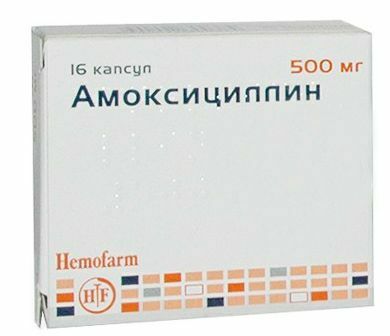 Refers to the penicillin group, is a broad-spectrum drug covering the Gram-positive and Gram-negative flora. Active active ingredient is Amoxicilin. Children tolerate the drug well because of its low toxicity and high bioavailability.
Refers to the penicillin group, is a broad-spectrum drug covering the Gram-positive and Gram-negative flora. Active active ingredient is Amoxicilin. Children tolerate the drug well because of its low toxicity and high bioavailability.
Amoxiclav
 A complex preparation with a stable antimicrobial activity than other drugs of the penicillin group. The active substance is potassium clavulanate, which destroys the protective enzymes produced by bacteria - B-lactamase. The drug stimulates the body's immune responses.
A complex preparation with a stable antimicrobial activity than other drugs of the penicillin group. The active substance is potassium clavulanate, which destroys the protective enzymes produced by bacteria - B-lactamase. The drug stimulates the body's immune responses.
Augmentin
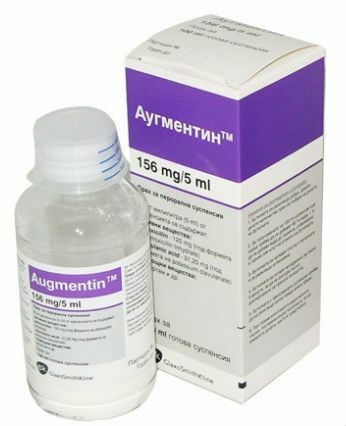 It is considered one of the most advanced antibacterial agents for the treatment of bacterial sore throat and other diseases. The basis of the drug is a combination of amoxicillin and clavulanic acid in the form of potassium salt.
It is considered one of the most advanced antibacterial agents for the treatment of bacterial sore throat and other diseases. The basis of the drug is a combination of amoxicillin and clavulanic acid in the form of potassium salt.
Ampioks
 A combined preparation that contains ampicillin and oxacillin as the main active substance. Assign children and adults with respiratory tract infections, purulent angina, bronchitis and tonsillitis.
A combined preparation that contains ampicillin and oxacillin as the main active substance. Assign children and adults with respiratory tract infections, purulent angina, bronchitis and tonsillitis.
Phenoxymethylpenicillin
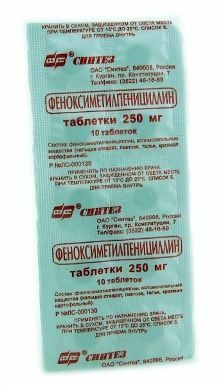 The active substance of the preparation is Phenoxymethylpenicillinum, which has an antimicrobial effect, reducing the intensity of bacterial growth without affecting the cells of the human body. The drug is not suitable for the treatment of fungal or viral infections.
The active substance of the preparation is Phenoxymethylpenicillinum, which has an antimicrobial effect, reducing the intensity of bacterial growth without affecting the cells of the human body. The drug is not suitable for the treatment of fungal or viral infections.
Oxacillin
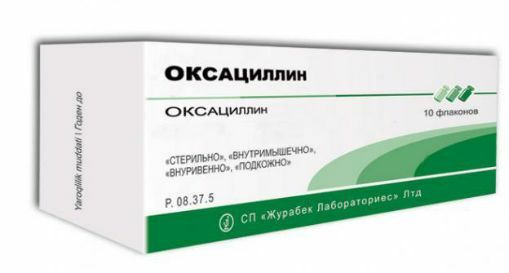 Refers to preparations of a group of semisynthetic penicillins. The active ingredient is Oxacillinum. The dosage form is available in the form of oral tablets or dry powder for the preparation of an injection solution. Oxacillin is prescribed for infectious diseases caused by gram-positive bacteria. The preparation does not act on fungi and viruses.
Refers to preparations of a group of semisynthetic penicillins. The active ingredient is Oxacillinum. The dosage form is available in the form of oral tablets or dry powder for the preparation of an injection solution. Oxacillin is prescribed for infectious diseases caused by gram-positive bacteria. The preparation does not act on fungi and viruses.
Cefradine
An antibacterial preparation in which the active ingredient is Cefradine. The drug has a bactericidal effect, shows a high activity against gram-negative microorganisms, resistant to other antibiotics. Side effects in children may be hypovitaminosis and skin rashes.
to table of contents ^Cephalexin
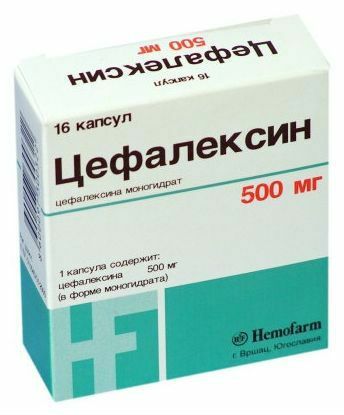 Antimicrobial preparation for systemic use. The active ingredient is Cefalexin, which has a bactericidal effect. Cephalexin is prescribed for infectious diseases caused by gram-positive bacteria. Side effects in children may be diarrhea, headache or drowsiness.
Antimicrobial preparation for systemic use. The active ingredient is Cefalexin, which has a bactericidal effect. Cephalexin is prescribed for infectious diseases caused by gram-positive bacteria. Side effects in children may be diarrhea, headache or drowsiness.
Erythromycin
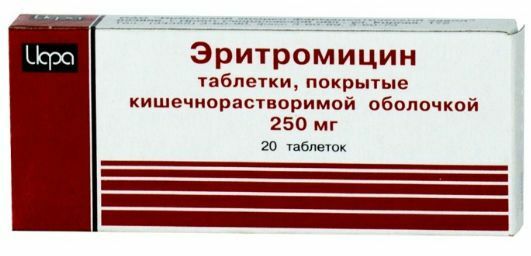 The drug belongs to the macrolide antibiotic group. The active substance is Erythromycin. In low doses, the drug has a bacteriostatic effect, in large - bactericidal. The dosage forms can be in the form of tablets, capsules, powders or granules for the preparation of injection solutions.
The drug belongs to the macrolide antibiotic group. The active substance is Erythromycin. In low doses, the drug has a bacteriostatic effect, in large - bactericidal. The dosage forms can be in the form of tablets, capsules, powders or granules for the preparation of injection solutions.
Spiramycin
 Spiramycin as an active substance has antibiotic group macrolide with a bacteriostatic effect - Spiramycin. When using the drug, it is necessary to monitor the biochemical parameters of the liver. Medicinal form - tablets.
Spiramycin as an active substance has antibiotic group macrolide with a bacteriostatic effect - Spiramycin. When using the drug, it is necessary to monitor the biochemical parameters of the liver. Medicinal form - tablets.
Clarithromycin
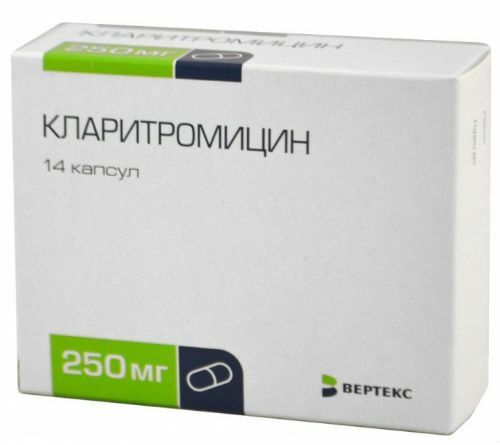 This is a semisynthetic antibiotic macrolide consisting of 14 components, chief among them erythromycin. Clarithromycin has a 10-fold better resistance to hydroisolating effects of hydrochloric acid, rather than the drug erythromycin. The drug exhibits the highest antibacterial effect in an alkaline environment.
This is a semisynthetic antibiotic macrolide consisting of 14 components, chief among them erythromycin. Clarithromycin has a 10-fold better resistance to hydroisolating effects of hydrochloric acid, rather than the drug erythromycin. The drug exhibits the highest antibacterial effect in an alkaline environment.
Azithromycin
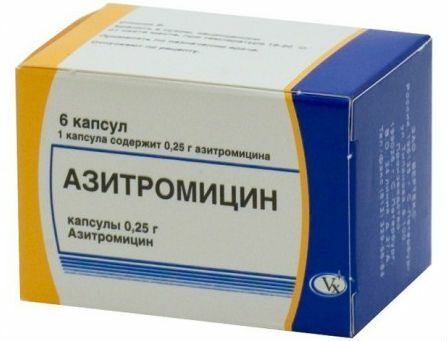 Semisynthetic antibiotic, which ranks first in the list of subclasses of azalides and slightly differs from classical macrolides in its structure. Acid resistance of the drug in comparison with erythrocin is 300 times higher.
Semisynthetic antibiotic, which ranks first in the list of subclasses of azalides and slightly differs from classical macrolides in its structure. Acid resistance of the drug in comparison with erythrocin is 300 times higher.
Roxithromycin
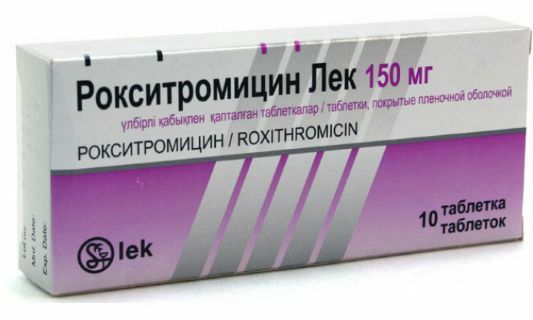 Antibiotic with active ingredient Azithromycin. Roxithromycin is a derivative of erythromycin. The drug has a wide range of antibacterial effects.
Antibiotic with active ingredient Azithromycin. Roxithromycin is a derivative of erythromycin. The drug has a wide range of antibacterial effects.
Wilprafen
 A natural macrobide antibiotic produced by actinomycete Streptomyces narbonensis. Active active ingredient is Josamycin. Assign for infectious and inflammatory diseases.
A natural macrobide antibiotic produced by actinomycete Streptomyces narbonensis. Active active ingredient is Josamycin. Assign for infectious and inflammatory diseases.
Tetracycline
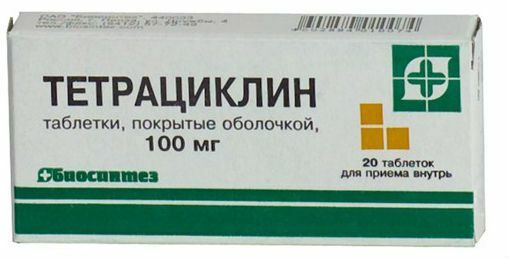 Is an antibiotic from the group of tetracyclines. The active ingredient is tetracycline. Write out the drug for infectious diseases. It is recommended to determine the tolerance to the active substance of the antibiotic before use.
Is an antibiotic from the group of tetracyclines. The active ingredient is tetracycline. Write out the drug for infectious diseases. It is recommended to determine the tolerance to the active substance of the antibiotic before use.
Doxycycline
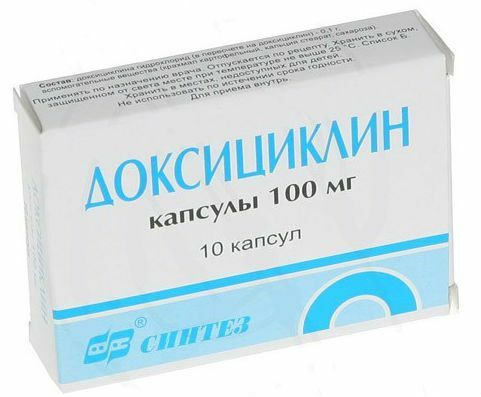 A semi-synthetic type antibiotic from the tetracycline group, which refers to broad-spectrum drugs. The active ingredient is doxycycline hydrochloride. Doxycycline is prescribed for infectious and inflammatory diseases that are caused by microorganisms.
A semi-synthetic type antibiotic from the tetracycline group, which refers to broad-spectrum drugs. The active ingredient is doxycycline hydrochloride. Doxycycline is prescribed for infectious and inflammatory diseases that are caused by microorganisms.
Lidaprim
Antibiotic with active active substance sulfametrol and trimethoprim. Before using the drug, children need to determine the sensitivity to the active ingredient.
to the table of contents ^Biseptol
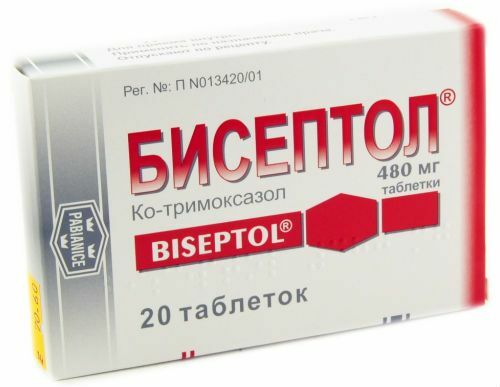 An atibiotic that is prescribed for respiratory tract infections. Active active substance - trimethoprim and sulfamethoxazole. This drug should be taken to children under medical supervision.
An atibiotic that is prescribed for respiratory tract infections. Active active substance - trimethoprim and sulfamethoxazole. This drug should be taken to children under medical supervision.
Bioparox
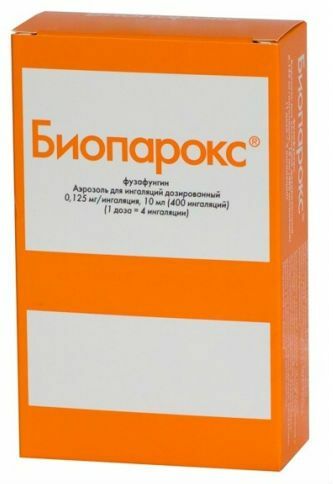 An atibiotic that is used for local therapy in the development of acute diseases of the respiratory system and ENT organs. Active active substance - fyuzafyunzhin. Form release - aerosol. It is prescribed by a doctor for inhalation to children through the nose or mouth. Contraindication to use may be an increased allergic reaction to the active substance.
An atibiotic that is used for local therapy in the development of acute diseases of the respiratory system and ENT organs. Active active substance - fyuzafyunzhin. Form release - aerosol. It is prescribed by a doctor for inhalation to children through the nose or mouth. Contraindication to use may be an increased allergic reaction to the active substance.
Ingalipt
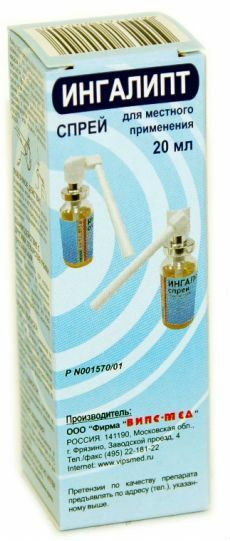 Represents an antibiotic with anti-inflammatory and antiseptic action. Active active substance - streptocide. Form release - aerosol. Doctors prescribe children for irrigation of the oral cavity.
Represents an antibiotic with anti-inflammatory and antiseptic action. Active active substance - streptocide. Form release - aerosol. Doctors prescribe children for irrigation of the oral cavity.
Gramidine
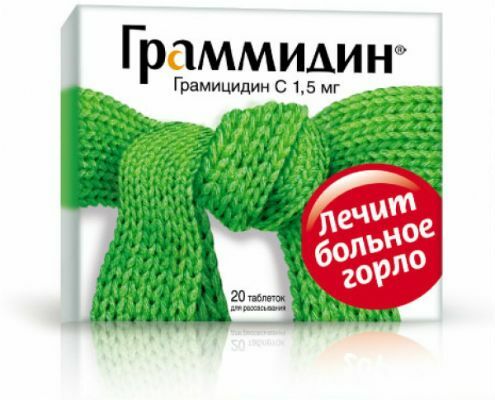 Preparation of antibacterial action of local action. Active active substance - gramicidin.
Preparation of antibacterial action of local action. Active active substance - gramicidin.
Nystatin
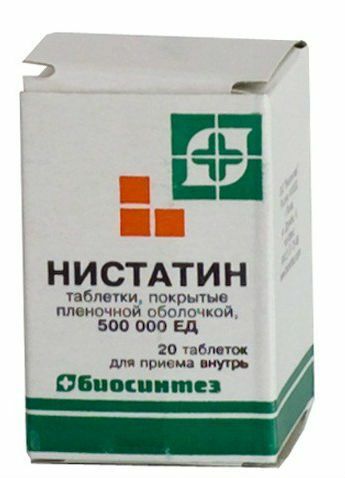 Antibiotic with active substance Nystatin. The drug is prescribed for the treatment and prevention of diseases provoked by yeast-like fungi of the genus Candida. Form release - tablets.
Antibiotic with active substance Nystatin. The drug is prescribed for the treatment and prevention of diseases provoked by yeast-like fungi of the genus Candida. Form release - tablets.
Levorin
The drug with the active substance - levorin sodium salt. It is prescribed by a doctor when yeast-like Candida type fungi are found.
to contents ^Ketoconazole
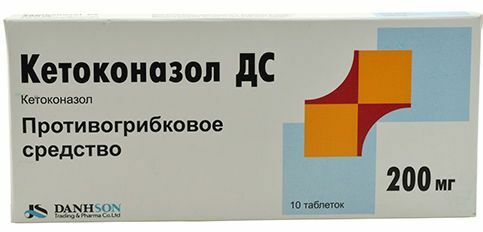 Antibiotic with active ingredient - Ketoconazole. Well absorbed, so it is possible to appoint children over two years old.
Antibiotic with active ingredient - Ketoconazole. Well absorbed, so it is possible to appoint children over two years old.
Is it possible to treat flu with antibiotics
? The parents face a difficult task - not to harm the child in the process of treatment, because the flu is a viral disease. Whether it is necessary to resort to serious preparations and whether it is possible to treat a flu with antibiotics?
It should be remembered that antibiotics in case of a viral disease do not "work".However, there are situations when the doctor recommends that you take a course of antibiotic treatment to have a prophylactic effect on the baby's body. This appointment can only be done by a pediatrician who owns a complete clinical picture.
